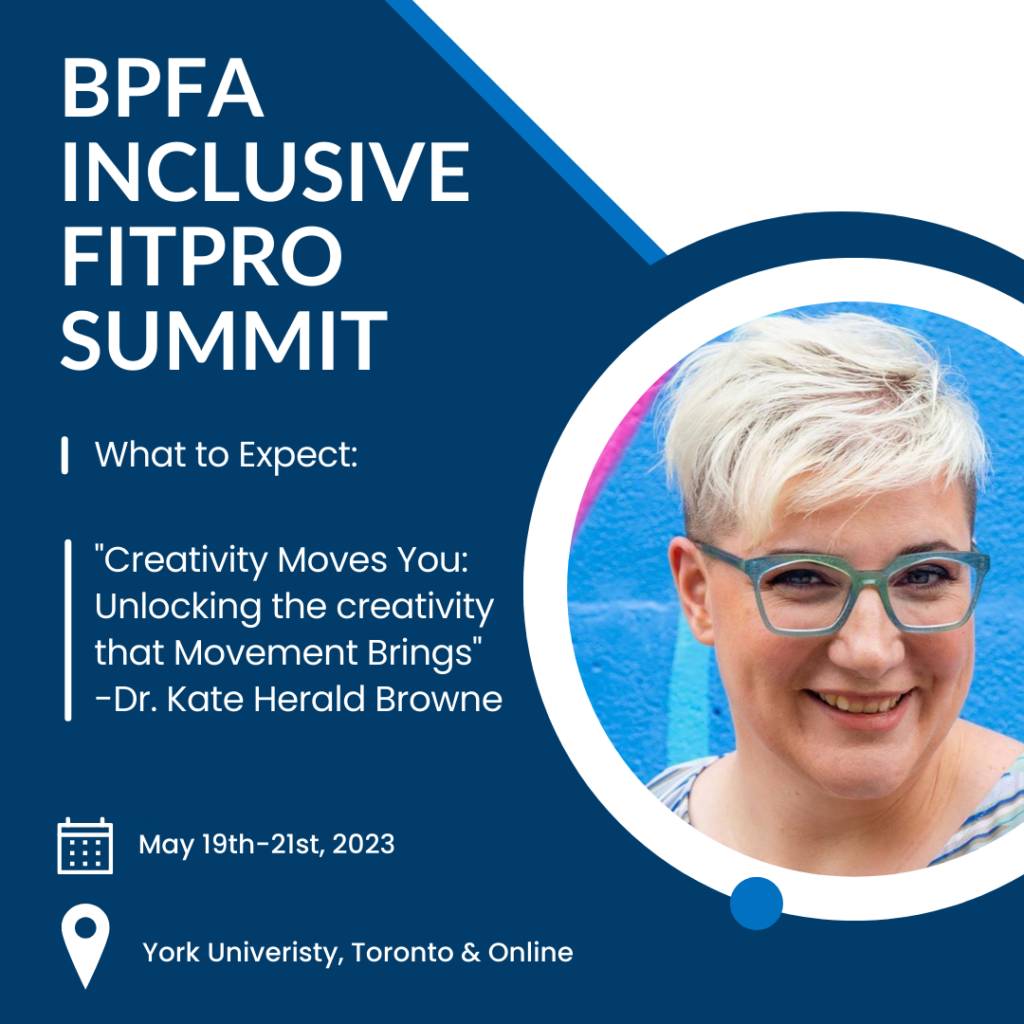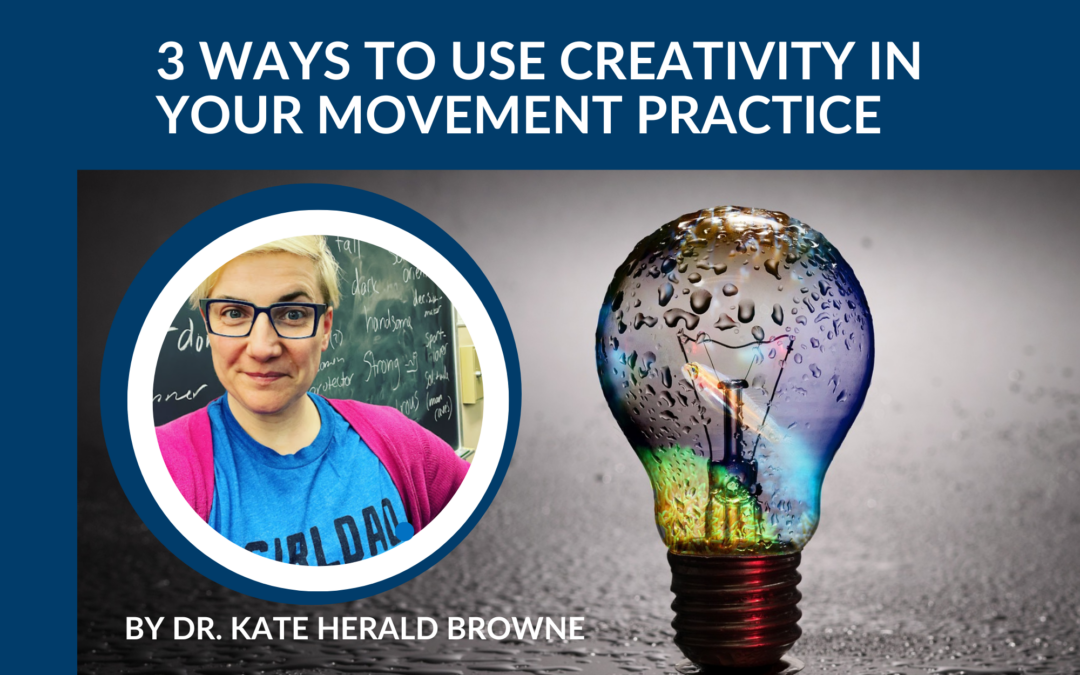By Kate Herald Browne, BPFA Board Member
A lot of people get their best ideas in the shower–I get most of my ideas when I’m running. Take this blog post, for example. I was spending some quality time with a treadmill at the kind of gym that features gray exercise machines lined up in rows as far as the eye can see. Not the most exciting place in the world to be. I put in my headphones to listen to my favorite running playlist and pretty soon my drab external world was replaced with an inner kaleidoscope of ideas, remixed conversations, and solutions to problems I’d been wrestling with for weeks.
I felt so inspired and wanted to write it all down. But…all I saw around me were drab, colorless humming machines. Fueled with endorphins, I wondered what gyms would be like if they offered people a creative outlet. I couldn’t possibly be the only person who feels energized to create after movement. Similarly, I know plenty of people who use movement to battle writer’s block, imposter syndrome, and other enemies of the creative mind. So, why do so many movement spaces feel closed off to creativity?
In most traditional fitness spaces, movement is considered to be an isolated activity. In a gym, you go there to use the equipment provided–treadmills, weights, and the like. In studios for dance, yoga, or group fitness, you go there to take a class on the modality being offered. In these spaces, you’re not exactly encouraged to stick around for social hour.
More importantly, movement in mainstream fitness is only deemed valuable if it feels like work. Creativity is about experimentation and play. There is a misconception that creativity and work are opposites, and that introducing something “fluffy” like arts and crafts to a gym space would devalue or undermine the goals of the space.
For body positive fitness professionals, incorporating creativity into a movement space brings incredible value to your clients and represents a radical shift away from movement as a boring, painful, or obligatory health practice. Instead, clients can start to see movement as a one of many tools available to them that work together to promote Full Health. Here are three ways that you can start to bring creativity into your movement practice:
Clear Some Creative Space
Think about areas of your movement space that could host a creativity station. This could be as simple as a chalkboard, a space on the lobby wall, or a window that you keep dry erase markers next to. You can make creative prompts part of the practice, like “Draw how [your movement practice] makes you feel” or “What’s your favorite animal?” or just leave writing tools out for clients. Waiting for class to start is a great time to doodle!
Pair Movement with Art
Consider hosting special events that intentionally bring movement and creativity together, like a paper plane circuit relay. You could also partner with local organizations that offer art classes to develop programming like movement-based acting classes, yoga paint nights, or Weights and Watercolors.
Personalize Client Progress
If your clients like to use progress tracking, encourage them to include non-numerical ways of sharing their achievements. A journal that includes writing, drawing, stickers, or painting can help foster the relationship between movement and creativity. This can also help clients learn new ways to tell the story of their progress in ways that numbers don’t always capture.
Come to the BPFA Inclusive FitPro Summit and Get to Connect with Kate!


Recent Comments